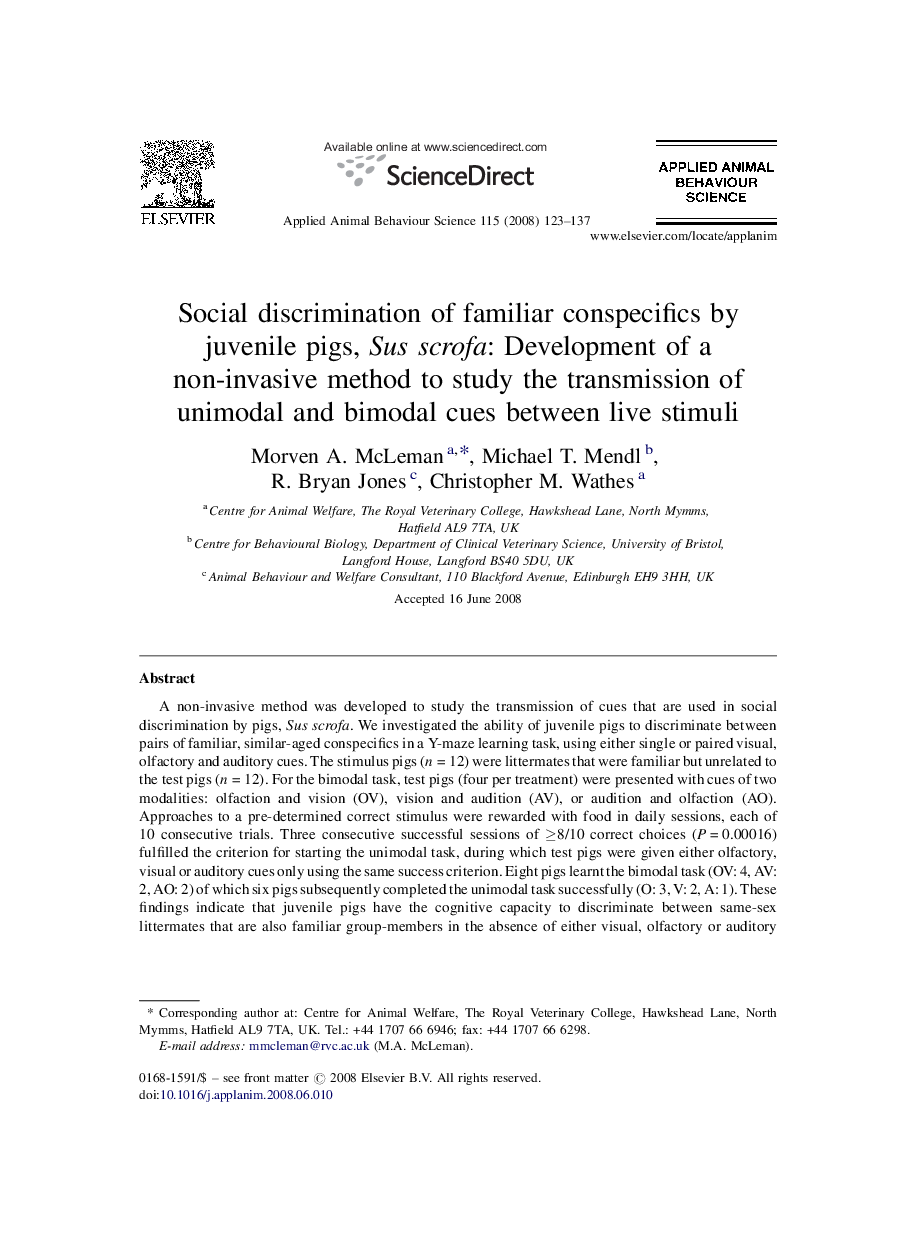| Article ID | Journal | Published Year | Pages | File Type |
|---|---|---|---|---|
| 4523825 | Applied Animal Behaviour Science | 2008 | 15 Pages |
A non-invasive method was developed to study the transmission of cues that are used in social discrimination by pigs, Sus scrofa. We investigated the ability of juvenile pigs to discriminate between pairs of familiar, similar-aged conspecifics in a Y-maze learning task, using either single or paired visual, olfactory and auditory cues. The stimulus pigs (n = 12) were littermates that were familiar but unrelated to the test pigs (n = 12). For the bimodal task, test pigs (four per treatment) were presented with cues of two modalities: olfaction and vision (OV), vision and audition (AV), or audition and olfaction (AO). Approaches to a pre-determined correct stimulus were rewarded with food in daily sessions, each of 10 consecutive trials. Three consecutive successful sessions of ≥8/10 correct choices (P = 0.00016) fulfilled the criterion for starting the unimodal task, during which test pigs were given either olfactory, visual or auditory cues only using the same success criterion. Eight pigs learnt the bimodal task (OV: 4, AV: 2, AO: 2) of which six pigs subsequently completed the unimodal task successfully (O: 3, V: 2, A: 1). These findings indicate that juvenile pigs have the cognitive capacity to discriminate between same-sex littermates that are also familiar group-members in the absence of either visual, olfactory or auditory cues, and that some can use just one of these modalities. A larger-scale study is needed to determine the sensory hierarchy of social discrimination in pigs.
